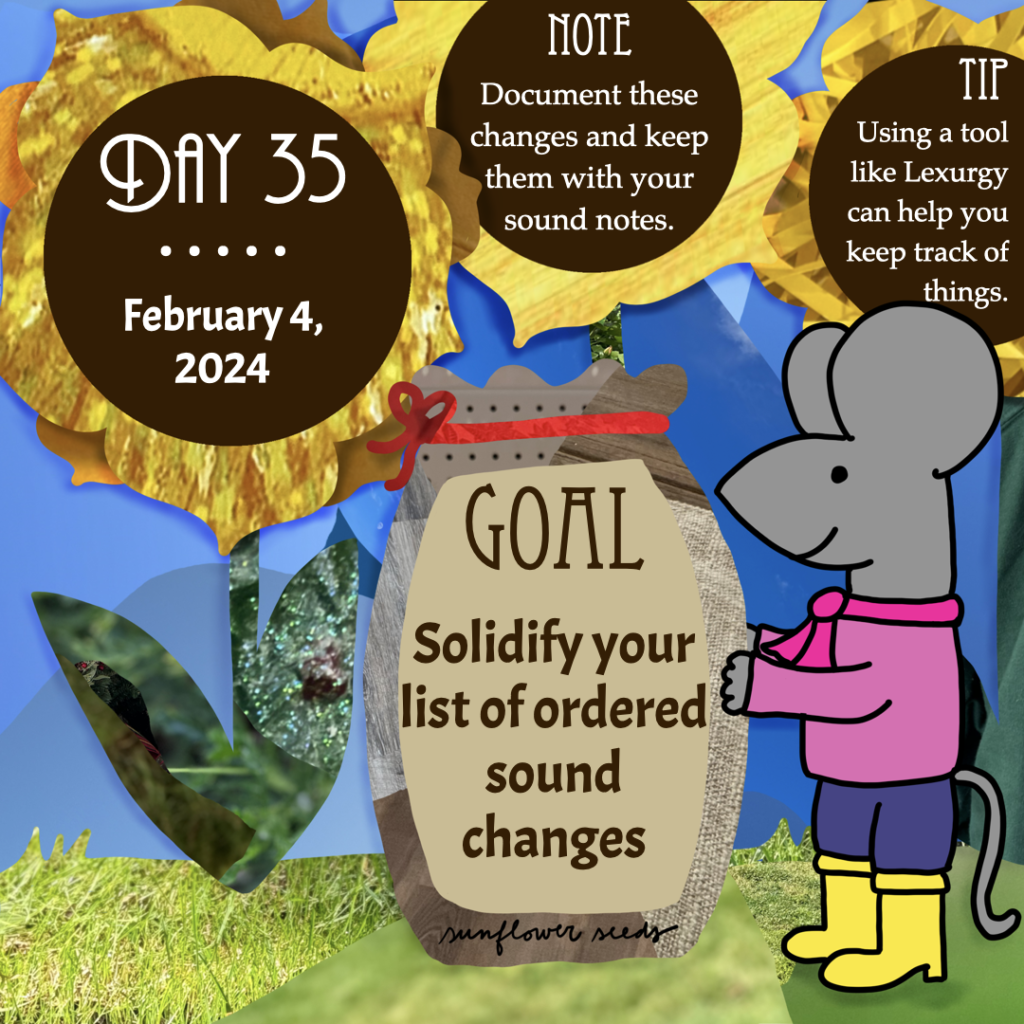
Goal: Solidify your list of ordered sound changes
Note: Document these sound changes and keep them with your sound inventory notes.
Tip: Using a tool like Lexurgy can help you quickly test sound changes on future forms.
Work focus: Solidify/Write/Share
Today’s focus is a culmination of the last two weeks of work you’ve put into your sound changes—it’s time to solidify your notes in your language’s documentation!
As ever, you need to figure out what methods of documentation work for you to keep your notes and ideas organized, but I’m going to make a suggestion based on what I’ve found that works for me. I prefer to have my sounds section ordered in this way:
- Proto-sound inventories (both consonant and vowel charts)
- Proto-stress and phonotactics (information on how syllables come together and where longer units carry stress)
- Sound changes (ordered and numbered so I can easily refer back to them later, and for every sound change, I like to include an example or two to make sure I remember how the sound change works)
What will come after that is information on the modern language and its sound system. Those sections will be the focus of tomorrow’s prompt.
You obviously don’t need to follow the way I structure language documents, but make sure that, whatever you decide to do, it makes sense for you and is a resource that is organized in a way you can quickly call up and reference information.
I also like to have ways to check my work, so to speak, to ensure that I’m applying sound changes accurately. My favorite online tool to use is Lexurgy, which allows you to put in your specific sound changes (in order) and then feed proto-forms into it. It will then run everything you’ve specified and show you the outputs, or the modern forms. It takes time to learn how to write the sound changes in the format used by Lexurgy, but I have found it is worth it. Lexurgy is especially helpful when I want to check a lot of forms to make sure I haven’t forgotten to apply any sound changes I had originally created.
